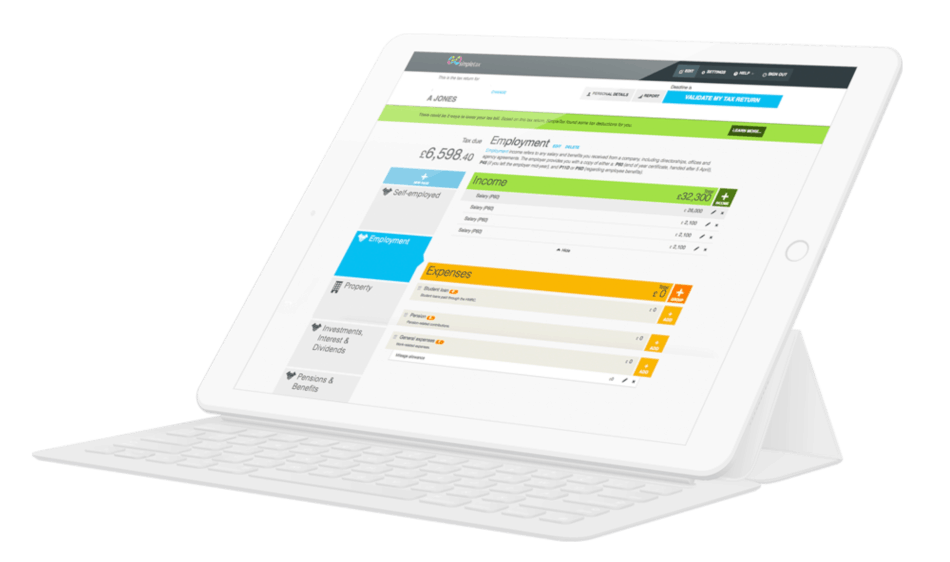How To Pay Your Tax Bill
Tax is a certainty we can’t avoid. We know we have to pay it, but the means of doing so aren’t as clean-cut or straightforward. A few payment methods to pay your tax bill exist…
5 Minute Read
Last Updated: 28th June 2022
Tax is a certainty we can’t avoid. We know we have to pay it, but the means of doing so aren’t as clean-cut or straightforward. A few payment methods to pay your tax bill exist but, as you may have found, the rules around these are complex and subject to change. For anyone who owes tax outside of PAYE, it can be downright confusing.
However, we don’t want you to get bogged down in the details. The SimpleTax team are here to explain the ins and outs that influence payment of your tax bill:
Option 1 – Debit/credit card online
The main solution for many is going to be a digital payment via HMRC’s online payment system. You’ll need your UTR (Unique Tax Reference) code to indicate what the sum is covering. The whole amount must be paid at once, from the same card, for a certain type of tax (i.e. ‘income’ vs. ‘capital gains’); otherwise it’s not going to be processed.
Frustratingly, there are limits on how many times you can spend on the same card repeatedly over the year. The guidelines for this rely on “a view of what’s reasonable based on card payment industry standards.” It’s also worth noting that personal credit cards will no longer be accepted from the 13th January 2018, and that all credit cards are subject to a non-refundable charge.
Option 2 – A postal cheque
Traditional methods still exist, such as a cheque made out to ‘Her Majesty’s Revenue & Customs only’ (followed, again, by your UTR). Any deadlines are counted as the date of receipt, so you should leave at least three working days for delivery, and obtain proof of postage to allow for any mishaps.
To make the cheque valid, you’ll have to pair it with a special pay-in slip, which can be printed here; just make sure the two aren’t stapled together, or folded up.
Option 3 –In-person to your local bank
From the 15th December 2017, post office payments will no longer be accepted. They used to process any obligations to the limit of £10,000 per tax period, but this option is being phased out. Banks, though, are still classed as a valid payment station: you can walk up and pay your tax bill over the counter.
To do so, ensure you have paper statements from HMRC regarding what’s owed. Then follow the steps in our previous point, with a cheque and pay-in document. Unlike postal receipts, the government will count the day you paid up as the day received, even if it doesn’t hit their account for a short while.
Option 4 – Direct debit
The easiest way might be a direct debit agreement, timed on or before the two tax deadlines (31st January and July 31st). The first payment will take five working days to process, but any others should cut that down to three, as your details are added to the database.
It doesn’t end there either… There’s scope for phone payments too, if you prefer. However you pay, just remember to check that your tax bill is correct before you make the payment.
SimpleTax, our tax return software, can help with this, to take the stress out of managing your Self Assessment. It’s also a prime tool to calculate what you might have to pay on account, or any other figure you’re liable for – try it now to see how your non-PAYE finances can be utterly transformed.
The following articles may be of interest
- 5 tips to reduce your tax bill in 2018
- How to reduce tax bills if I’m self-employed
- How to reduce your tax bill if you’re self-employed
- Tax and national insurance when you’re self-employed
Blog content is for information purposes and over time may become outdated, although we do strive to keep it current. It's written to help you understand your Tax's and is not to be relied upon as professional accounting, tax and legal advice due to differences in everyone's circumstances. For additional help please contact our support team or HMRC.
How to keep track of your side hustle income and expenses
16 Apr 2024
12 things business partners should know about Self Assessment
15 Apr 2024
Everything you need to know about payments on account
31 Mar 2024
How GoSimpleTax Works
Register
Simply register for free with your full name and email address.
Select Your Income
Select the income you receive and follow the hints and tips for potential tax savings.
Validate Your Information
Validate your personal information and submit directly to HMRC to get confirmation in just seconds.

Work Anywhere, With Any Device
Gone are the days of fretting over a calculator surrounded by scraps of paper at the eleventh hour.
GoSimpleTax’s tax return software uses the information you upload in real time to calculate your income and expenditure, working out the tax you owe and sending you helpful notifications when there’s the possibility of a mistake.
"The software is intuitive and proved very easy to navigate. I found the whole process refreshingly simple. I saved a lot of money too!"
Steve J.
Ordained Presbyter
"Easy to use and value for money. Everything you need to do your tax."
Gordon J.
Self Employed
"It fills in all the forms and sends them to the Inland Revenue. Not expensive either. Takes the stress out of doing your tax return online."
Ross G.
Team Rector
